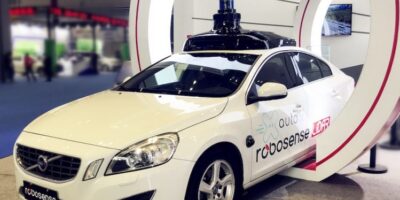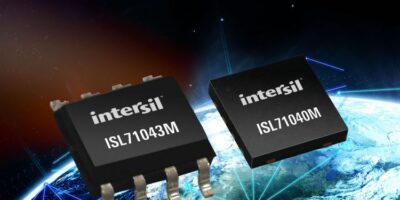RoboSense has partnered with Horizon Robotics, Cainao Network, Sensible 4 and AutoX to introduce the Smart Sensor System designed for autonomous passenger cars, low-speed autonomous vehicles, high-speed robot taxis, and vehicle to road (V2R) infrastructure. The RoboSense Smart Sensor System combines lidar hardware, artificial intelligence (AI) point cloud algorithms, and an IC design for a smart sensor system that collects and interprets environment information.
At the Shanghai Auto Show, RoboSense announced the RS-Bpearl, a super wide angle blind-spot lidar and the RS-Ruby, a super high-resolution lidar for the sensor system.
The smart sensor system combines the RoboSense RS-Lidar-M1 MEMS -based smart sensor with the RS-Bpearl super wide angle blind-spot lidar, RS-Ruby super high-resolution lidar and RoboSense AI perception algorithms. RoboSense chose MEMS technology because of its high integration levels, high performance, high reliability, easy production, and low cost. It uses 905nm lasers for its solid state lidar system. RoboSense’s RS-Lidar-M1Pre debuted at CES 2018, and the upgraded RS-LiDAR-M1 introduced a wide, 120 degrees, field of view (FoV), a long range of 200m and AI algorithm innovations. The RS-lidar-M1 now meets OEM requirements and delivers safety for L3+ autonomous passenger cars.
Scheduled for mass production in 2021, the RoboSense RS-Lidar-M1 for OEMs will be a smart sensor. RoboSense and Horizon Robotics will build customised chips for the lidar environment perception algorithm, called RS-Lidar-Algorithms. These algorithms will be integrated into the IC and embedded in the lidar hardware. The RS-Lidar-M1 will provide instantaneous 3D point cloud data interpretation and output target level environment perception results in real time to autonomous vehicles.
In another project, RoboSense and Cainiao Network launch a smart sensor system for unmanned, low speed vehicles without blind spots. Previously, these unmanned vehicles used single laser beam lidar, which delivered unsatisfactory environment perception because of blind spots caused by the limitations of vertical FoV.
The RS-Bpearl has a wide FoV of 360 x 90 degrees, within the detection range of 30m (10 per cent) for a 100mm blind spot. The compact size of the sensor makes it easy to be applied to the side of the vehicle body to detect the vehicle’s surroundings, including blind spots. The RS-Bpearl’s modular design also dramatically reduces cost while adding the ability for customisation, says RoboSense.
Robot taxis need lidar with a higher vertical resolution to achieve a longer detection range, leading RoboSense to develop the 128 beam RS-Ruby lidar. It has three times higher 0.1 degree resolution and a three times longer detection range, compared with the previous version, RS-Lidar-32. One RS-Ruby Lidar is the core sensor on top of the vehicle to cover the 360 degree perception and two are located on the vehicle’s sides to detect blind spots.
Vehicle to road (V2R) systems allow vehicles to work with road conditions to co-ordinate and optimise the vehicle’s driving path, improving safety and road efficiency. RoboSense partnered with Sensible 4 to launch the world’s first autonomous driving shuttle bus for all weather conditions, the GACHA. Equipped with RoboSense’s cold-resistant 16-beam mechanical lidar environment perception system works on snow and ice covered roads in harsh winter and other severe weather conditions. RoboSense and Finland-based Sensible 4 will continue to collaborate deeper on future autonomous driving applications.






